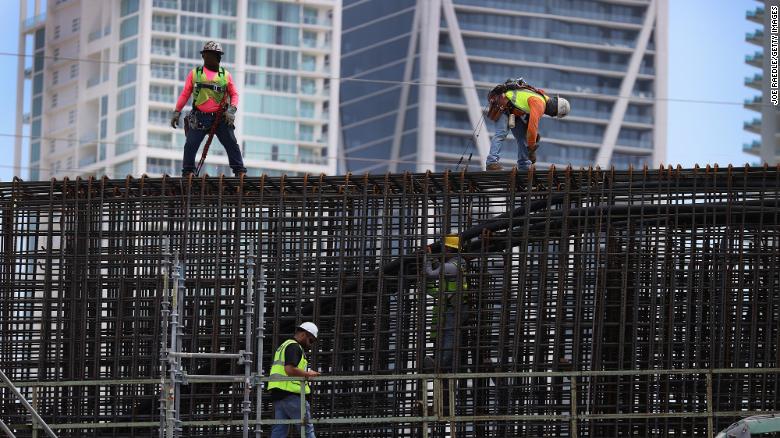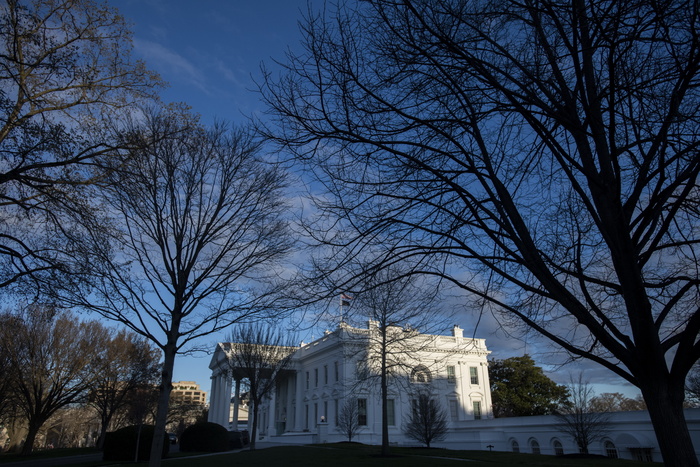Why does the economy of some states recover earlier?
1:07
(CNN Business) -
More than a year after the pandemic began, the US economy is on the cusp of a full recovery.
But reaching that milestone will not be easy yet.
CNN Business' Back to Normal Index, developed in partnership with Moody's Analytics last year, shows that the U.S. economy is 90% of the way back to where it was before the pandemic began, more than one year.
The index, which is made up of 37 national indicators and seven at the state level, had bottomed out at around 57% as of April 2020.
But despite the immense improvement, getting back that last 10% will be difficult.
The vaccination effort is ongoing and consumers are once again spending money on food and travel;
however, the nation continues to have millions of jobs below pre-pandemic levels.
Meanwhile, many workers continue to have doubts about returning to work in person, and the child care conundrum has yet to be solved in many areas where schools and day care centers are still not operating at full capacity.
This is what needs to happen for the country to return 100% to the pre-pandemic economy.
advertising
IMF: US grows at fastest pace since 1984 0:54
Gaps in the labor market
The labor market is in an uncomfortable phase of recovery.
The nation has millions of fewer jobs compared to before the pandemic, and at the same time, many companies say they can't find the workers they need.
Economists warn that while most jobs will return, some are likely to be gone for good.
The states that were hit particularly hard, including New York, Nevada and Hawaii, still lag behind the national unemployment rate of 6.1%.
Some sectors of the economy, such as construction, demand more workers.
Economists predict that many jobs will return for the rest of the year.
The full reopening of face-to-face education in September could also lead to another boost to employment.
But in April 2021, the United States still had 8.2 million fewer jobs compared to February 2020, before the pandemic.
Only the tourism and leisure sector, which was hit the hardest by lockdowns last year but has also seen the strongest rebound in hiring, has still lost 2.8 million jobs.
Long working hours are killing hundreds of thousands of people a year, says WHO
Job openings in healthcare, retail and real estate are skyrocketing, according to LinkedIn data, which is measured by the Back-to-Normal index.
Low mortgage rates have fueled a housing boom across the country.
The employment cap
Meanwhile, executives in the manufacturing industry complain that they cannot find qualified workers.
Businesses are struggling to find employees: why?
2:56
Businesses in all sectors are raising wages to attract employees, and Republicans argue that expanded pandemic-era unemployment benefits are the reason workers prefer to stay at home.
For those at the lower end of the income spectrum, which means making less than $ 32,000 per year, according to Bank of America estimates, it might make financial sense to stay home due to the improved benefits.
For all other workers, it's about weighing the risks of returning to a job that could expose them or their loved ones to a virus that is still very active in communities across the country.
ANALYSIS |
Mass shootings mark a dubious & # 8216; return to normal & # 8217;
in United States
It depends on the consumer
America's economy is driven by people.
Consumer spending fuels more than two-thirds of the nation's gross domestic product, the broadest measure of economic activity.
Consumers are spending more money again, especially on restaurants and travel, where business came to a standstill at one point last year.
Now the biggest piece of the recovery puzzle is keeping people spending.
Washington's stimulus controls and expanded unemployment assistance helped with that.
But data from the Bureau of Economic Analysis, used in the Back-to-Normal index, shows that the national savings rate remains much higher than before the pandemic.
The concern here is twofold: people need to spend rather than save to help bring the economy back to normal, but at the same time, the spike in spending, along with other factors, including a rise in commodity prices. , is driving an increase in inflation.
Some economists worry that prices are rising so fast that they discourage consumers from spending.
It would be very bad news for the recovery, but so far there are no signs of that happening.
From an investor point of view, stocks remain near record highs.
But if the Federal Reserve decides that inflation is too big of a concern, the central bank could change its policy of near-zero interest rates and end the stock market boom.
Still, the recovery is proceeding slowly.
But it relies on a multitude of moving parts and a delicate balance that cannot be upset before things are completely back to normal.
Economic Crisis Jobs Pandemic Spending Impact








/cloudfront-eu-central-1.images.arcpublishing.com/prisa/X33WQ3GSYFF3DBKJDAVIGHN3DA.jpg)





